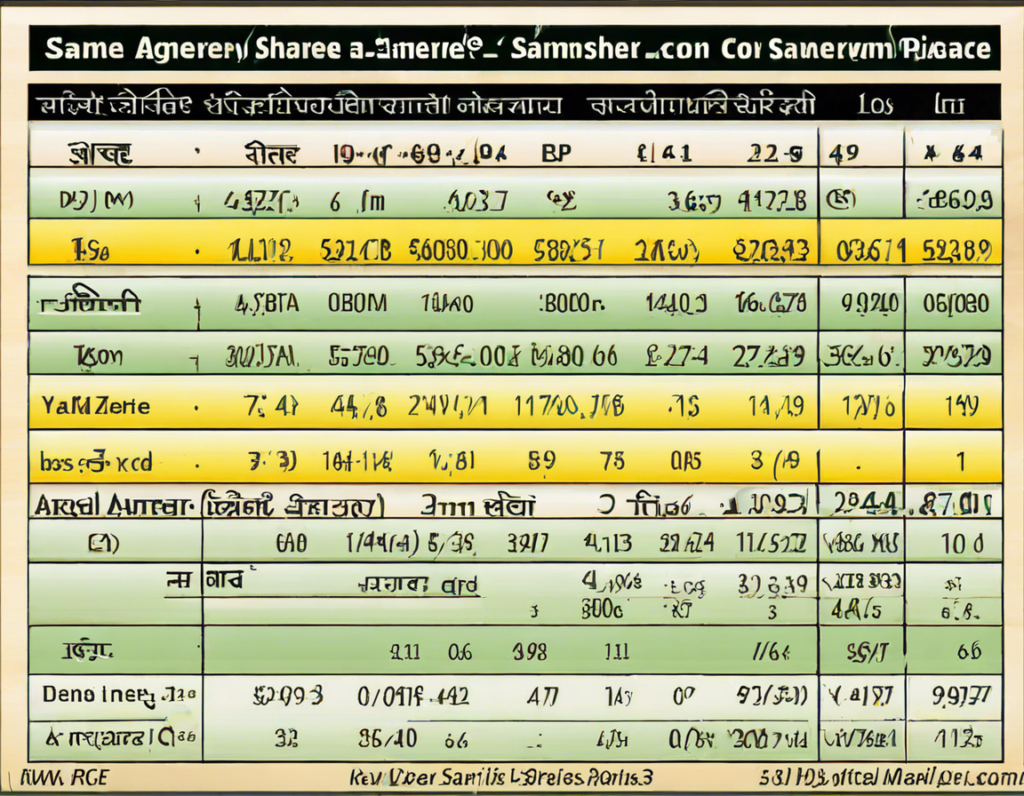The Sameera Agro stock is currently attracting the attention of many investors due to its recent price trends. Understanding how to analyze these trends can be crucial for making informed investment decisions. In this article, we will delve into the various factors that can impact the Sameera Agro share price, the key indicators to look out for, and how to interpret them effectively.
Factors Influencing Sameera Agro Share Price Trends
-
Company Performance: The financial performance of Sameera Agro is a significant factor that can influence its share price. Investors often look at factors such as revenue growth, profit margins, and return on equity to gauge the company’s overall health.
-
Industry Trends: The agricultural sector, in which Sameera Agro operates, is subject to various market forces such as commodity prices, weather conditions, and government policies. Monitoring these trends can provide insights into the company’s future performance.
-
Macroeconomic Factors: Economic indicators like GDP growth, interest rates, and inflation can impact stock prices across all sectors, including agriculture. Investors should stay informed about these factors to anticipate potential changes in Sameera Agro‘s share price.
-
Competitive Landscape: Keeping an eye on competitors in the agricultural industry can help investors understand Sameera Agro‘s position relative to its peers. Any developments among competitors can have a ripple effect on the company’s stock.
Key Indicators for Analyzing Sameera Agro Share Price Trends
-
Price-to-Earnings (P/E) Ratio: The P/E ratio reflects investor sentiment towards the company. A high P/E ratio may indicate that the stock is overvalued, while a low ratio could suggest a potential buying opportunity.
-
Earnings Per Share (EPS): Monitoring changes in EPS can provide insights into Sameera Agro‘s profitability over time. Positive EPS growth is generally seen as a positive indicator for investors.
-
Dividend Yield: For income-oriented investors, the dividend yield is a crucial metric to consider. A stable or increasing dividend yield can attract investors looking for regular income streams.
-
Technical Analysis: Traders often use technical indicators such as moving averages, Relative Strength Index (RSI), and MACD to analyze historical price trends and identify potential entry or exit points.
Interpreting Sameera Agro Share Price Trends
-
Rising Share Price: A consistent uptrend in Sameera Agro‘s share price may indicate positive investor sentiment towards the company, driven by strong fundamentals or positive industry developments.
-
Declining Share Price: Conversely, a downtrend could signal concerns among investors regarding the company’s performance, industry headwinds, or broader economic factors.
-
Trading Volumes: Monitoring trading volumes can help investors gauge the level of interest in Sameera Agro stock. High trading volumes accompanied by price movements could indicate increased buying or selling pressure.
-
Analyst Recommendations: Keeping track of analyst sentiment and recommendations on Sameera Agro can provide additional insights for investors. Upgrades or downgrades from analysts can influence stock prices.
FAQs (Frequently Asked Questions)
- What are some common challenges in analyzing Sameera Agro share price trends?
-
Analyzing complex market dynamics, interpreting conflicting indicators, and predicting future price movements accurately are common challenges investors face.
-
How can I stay updated on Sameera Agro’s financial performance?
-
Monitoring the company’s quarterly earnings reports, annual filings, investor presentations, and press releases can provide valuable insights into its financial health.
-
Is technical analysis or fundamental analysis more effective for analyzing Sameera Agro stock?
-
Both approaches have their merits. Fundamental analysis focuses on company financials, while technical analysis uses historical price data. Combining both methods can provide a comprehensive view.
-
What role does market sentiment play in Sameera Agro share price trends?
-
Market sentiment, driven by factors like news events, investor emotions, and macroeconomic trends, can heavily influence short-term price movements of Sameera Agro stock.
-
How can global events impact Sameera Agro share price trends?
- Global events such as trade policies, currency fluctuations, and geopolitical tensions can impact Sameera Agro’s business operations, supply chain, and overall market sentiment.
In conclusion, analyzing Sameera Agro share price trends requires a comprehensive understanding of various factors that can influence stock prices. By keeping a close watch on key indicators, market trends, and company performance, investors can make well-informed decisions and navigate the volatility of the stock market effectively.
